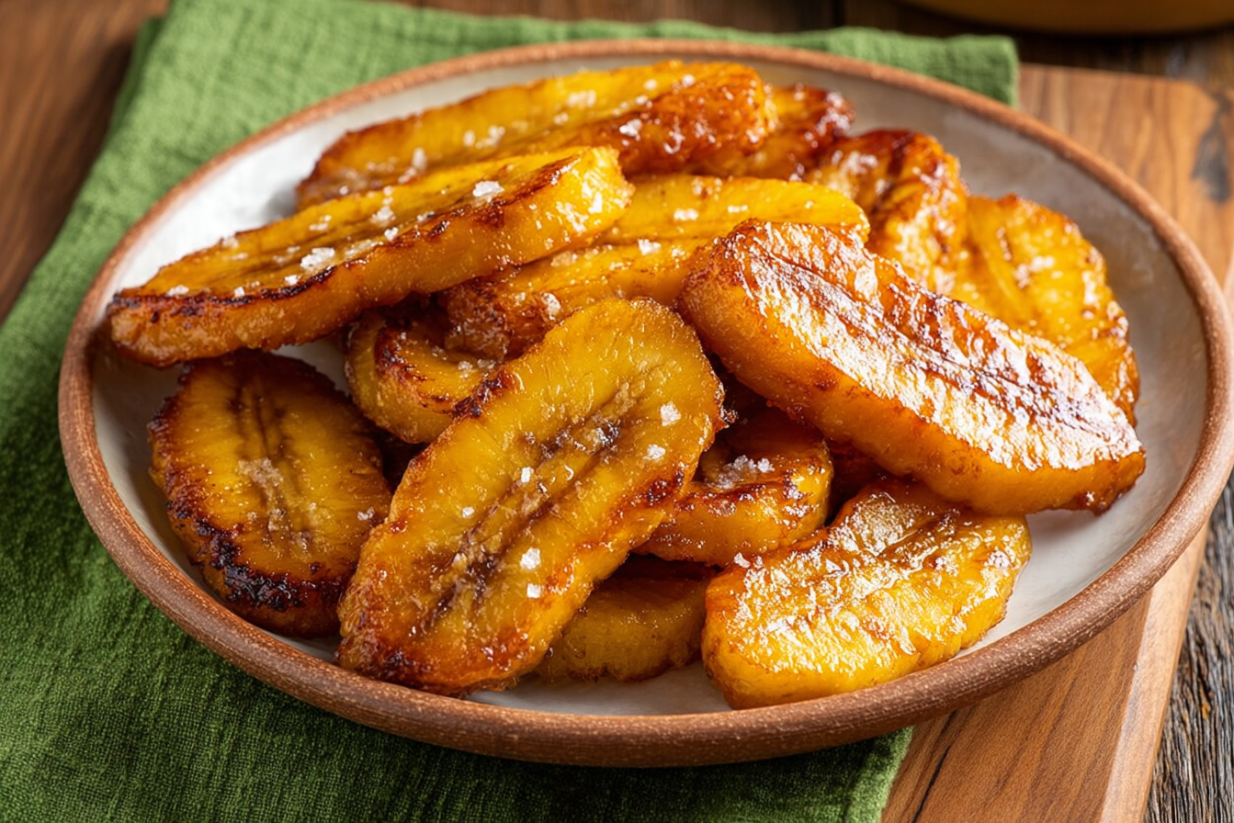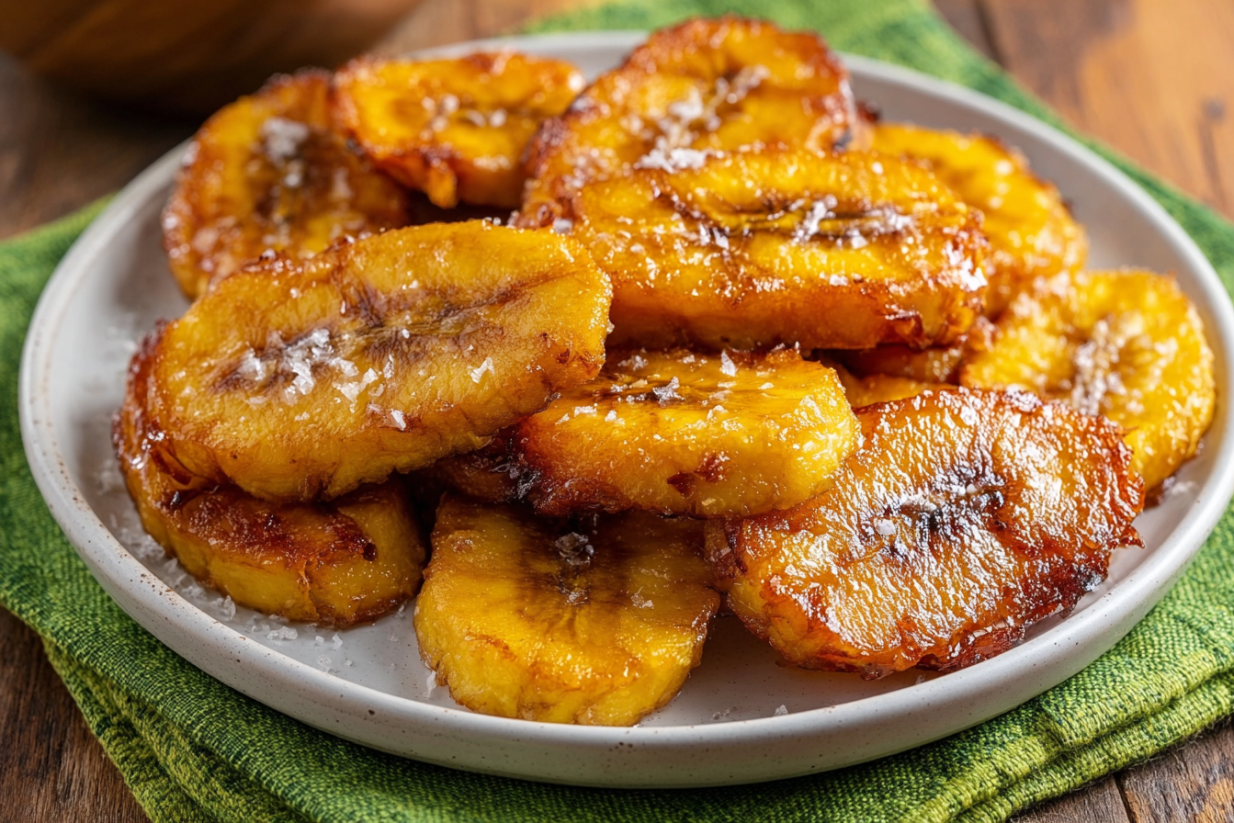 Bookmark
Bookmark
Plantains show up on dinner tables from Puerto Rico to Ghana and have become one of my favorite kitchen staples for both sweet and savory recipes. With their ability to turn from potato-like and starchy when green to soft and sweet when blackened, plantains are incredibly versatile and delicious at every stage. Whether you want a crispy chip, rich side dish, or hearty main, knowing how to shop for and cook plantains will open up a world of flavors in your kitchen.
Plantains took me by surprise the first time I made tostones for friends and instantly won everyone over with their crispy crunch. Now roasted or fried plantains are a default in my house when we want something satisfying and a little different.
Ingredients
- Green or yellow-black plantains: Choose based on your recipe need firmer green for savory fried or mashed dishes and soft black-spotted for desserts and caramelized sides. Always look for unblemished heavy fruit with no shriveling and a firm feel
- Neutral oil (such as vegetable or canola): Use for frying or baking plantains to crisp perfection without adding competing flavors. Make sure it is fresh and not reused to keep the taste clean
- Kosher salt: Brings out both earthy and sweet notes after cooking. Flaky salt sprinkled over platanos maduros or tostones elevates the flavor in every bite
- Butter: Adds a touch of richness to fried ripe plantains and promotes browning. Opt for high quality unsalted butter for the best result
- Optional flavors: Try cinnamon and coconut milk with sweet mashed plantains or garlic and cheese with savory mashes. Picking fresh spices or real cheese enhances authenticity
Step-by-Step Instructions
- Peel and Prep:
- Start by cutting off both ends of the plantain with a sharp knife. For green plantains make a shallow lengthwise cut through the thick peel and use your fingers to carefully separate the skin in sections. For ripe black or yellow plantains the skin can often be removed by hand like a banana
- Slice or Chop:
- Choose the shape your recipe calls for. For tostones slice crosswise into inch thick rounds. For sweet maduros slice on the diagonal in half inch slabs for more caramelized edges. For chips use a mandoline or sharp knife for ultra thin uniform slices
- Soak and Rinse (Optional):
- If making fried tostones or chips soak the slices in salted water for 15 to 30 minutes to help create a tender interior with a crunchy golden outside. Pat thoroughly dry before cooking to avoid oil splatter
- Fry or Bake:
- Heat neutral oil in a deep skillet to around 350 degrees Fahrenheit. Fry plantain pieces in batches until golden brown and crisp working in small quantities so the oil temperature stays steady. For baked chips toss the slices with oil and bake on a parchment lined sheet turning once until golden and crisp
- Season and Serve:
- Drain on paper towels and sprinkle with kosher salt plus any other seasonings while still hot so everything sticks. Serve right away since most types are best enjoyed fresh
 Bookmark
Bookmark
I love how plantain flavor evolves as they ripen. My favorite plantain memory is mashing super-ripe blackened plantains with a drizzle of coconut milk and a sprinkle of cinnamon for a holiday breakfast with my kids. It is pure comfort and tastes like dessert for breakfast.
Storage Tips
Store unripe plantains at room temperature out of direct sunlight until they reach your desired level of ripeness. If you are not cooking them right away when they are perfect tuck them in the fridge to pause ripening for up to two days. For longer keeping peel and cut the plantains then freeze for up to three months. You can cook straight from frozen for boiled or fried recipes
Ingredient Substitutions
If you cannot find plantains green bananas are a fair substitute for recipes like tostones though the texture will be a bit different. Yukon gold potatoes can be mashed using similar seasoning for a savory twist but nothing quite captures the buttery melt of ripe plantains. Try switching butter for coconut oil in sweet recipes for a dairy free choice
Serving Suggestions
Serve crispy tostones with a garlicky mojo sauce mashed plantains as a bed for stews or platanos maduros alongside roasted meats. Plantain chips are perfect for a crunchy snack and pastelón makes a gorgeous impressive casserole for any feast
 Bookmark
Bookmark
Cultural Context
Plantains have played a starring role across West African Central and South American Caribbean and Southeast Asian cuisines for generations. From Dominican pastelón to Puerto Rican mofongo and Ghanaian Kelewele every region puts its own stamp on this delicious fruit. For many families plantains are daily comfort food and festive centerpiece alike
Common Recipe Questions
- → How do plantains differ from bananas?
Plantains are firmer, less sweet, and used in cooking rather than eaten raw. Bananas are soft, sweet, and typically enjoyed fresh.
- → What's the best way to ripen plantains?
Let plantains sit at room temperature or place them in a brown paper bag for quicker ripening within several days.
- → Do you need to soak plantains before cooking?
Soaking is optional but can boost the crispness of fried plantains and enhance tenderness inside.
- → Can plantains be used while green?
Yes, green plantains are ideal for savory dishes like tostones and mofongo due to their firm, starchy texture.
- → How should plantains be stored?
Store at room temperature to ripen, then refrigerate for short-term storage once ripe. Freeze peeled slices for long-term use.
- → How are plantains prepared in dishes?
Plantains can be fried for maduro or tostones, mashed with spices, baked as chips, or layered in casseroles like pastelón.
